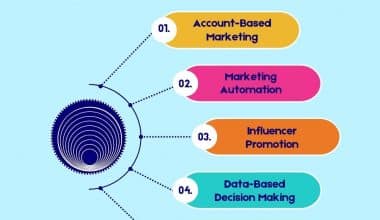A target market definition is simply a group of customers or organization most likely to buy a company’s product. The process of marketing to that selected group is target marketing. Target market can also be called market segmentation or Target audience. Understanding the term ‘target’: Target means ‘mark to shoot at’ as for practice. It is the category of persons or organization(s) that a company wants to have as customers. This article would help you understand the concept, types of target marketing, strategies and why it’s important to your business.
Concept of Target Marketing:
Target marketing involves the division of a market into different parts or segments. Then, focusing your sales promotion, primary works and all marketing activities on one or a few key segments. The segment consisting of customers whose needs are most suitable for your product and service offerings. This would help in the strong efficient implementation of experiential marketing
Target Marketing in Business Plan
Companies use this to learn more about their consumers, and thus, make peculiar adverts for unique groups to achieve maximum response. The products and services of the firm will be totally to serve those particular individuals, dealers or distributors. Our over 500+ business plan can give you a picture of this segment marketing as it relates to your business
Why is Target Market so important?
Tentatively, in marketing, if you are trying to talk to everyone you might not be reaching anybody. So, target marketing gives you a ground as it opens doors for you to speak directly to your defined audience; attract new and more customers.
Read Also: A comprehensive guide to Service marketing
Time and again, Target Marketing helps sellers build deeper customer loyalty. That is, the proximity between the buyer and the seller gives a clear understanding in trade and to checkmate your progress, as well as differentiating your brand from that of competitors as you find your way to the top of the business class.
Types of Target Marketing:
Target marketing can be divided into four main levels. Let’s examine them below:
#1. Demographic Target Market:
This is one of the frequently used types of target marketing. It basically concerns the human population and their metamorphosis with time. Inclusively, the likes are about individual’s education, gender, age etc.
#Examples of Demographic Target Market are:
Classification based on age, gender and ethnicity. A company producing women wears targets its promotional efforts to the feminine gender.
#2. Behavioural Target Marketing:
This is about human conduct with respect to social norms. The way customers act and their reaction to the brand.
Examples of Behavioural Target Market:
Since this type of market is based on lifestyle preferences, usability status is inevitable. So, this actually involves people’s purchasing and spending habits. For instance, a company producing boats, swimsuits, and life jackets aim only at customers that enjoy swimming and their leisure on the water.
#3. Psychology Target Marketing:
This type of target marketing involves cognitive responses (or psychological profile), as well as the consumer’s income, characteristics, and personality (emotions inclusive).
Examples of Psychology Target Market:
Personal goals, values, interests, and priorities play a role in this type of Target Market. However, it is not easy to identify as it requires research to spot in the customers. Furthermore, considering the case of pure diamonds, gold, and private jets, they are only produced for higher-income earners and organizations. Hence, low and average earners can use buses or wear cheaper jewelry.
#4. Territory Target Marketing:
This is believed to be the simplest type of Target Marketing because it’s just based on geography. Thus, the productions are done to fit into the climate, weather and topography of the aimed consumers.
Read More: Understanding Your marketing environment
Examples of Territory Target Market:
The likes of these are location production and demands, zip-code, country choices, urban and rural investments. For example, thick and heavy sweaters or jackets are produced mostly for people residing in temperate and snowy regions to keep them warm.
Target Marketing Strategies:
These are processes in learning about your targeted customers as you find a new market and more opportunities. Target marketing strategies help you increase market share and would help you put the information into practice for effective results. This includes:
#1. Buyers and Seller Analysis:
In this strategy, the company is required to have the audience of their existing consumers, interview them, and the sales team. The sales team is resourceful as they ask customers questions that aid to identify what they really want, and if they are satisfied with the products and services. To achieve this, the sellers use their web or Google page to check customers’ comments about their brand and the frequency of what they search for.
#2. Buyer Persona:
A Buyer Persona is a document that customers use to fill in personal information about their age, gender, job title, commendations, and challenges they have using the product and services. In this light, the seller obtains the description of its ideal customer and the exact type of consumers they want to target and attract.
#3. Questioning and Identification of Brand:
This strategy drives the sellers to new marketing tactics, and to achieve this, the seller asks questions like:
What solutions can the brand provide? Answering this would help you device efficient product marketing strategies
What are the ways to beat other competitors?
What are the customer’s testimonies?
Which skills are we lacking?
Answers to these questions and their likes will help your brand get clear goals and draw new customers, as well as an increase in profit with existing consumers.
#4. Campaign and Effectiveness:
Once you find a new market you want to explore, it is advisable you do campaigns, show off your brand and do free trials. Additionally, allow people to use your product, and track the results. Consequently, you will see the customers or organizations you can specifically target. Continue the process, test, and iterate.
Target Marketing Analysis:
This is a review of your noumenon customers as to understand who you will sell to. Thoughtfully, in conducting this analysis, it might be a little bit hard, but the worth is invaluable. Here are some questions to ask:
- Who are my potential customers?
- What are their interests and income?
- When exactly do they buy my brand?
- Where do they work or reside?
- Why do they buy from me?
- And finally, how do they act and react to the product and services?
How to do Target Market Analysis:
In relation to what you are searching for, analysis isn’t easy but try to gather enough information about your customers. To do this, use your past sales book and check out for the average purchase rate or price. Additionally, inspect when the marketing is hasty and when it’s not; the week/month you sold your brand the most and reasons to that effect. Hence, find out why your customers patronize you and why those that did stop. Try to modify ways to attract more customers. From this analysis, you can then make plans to market your brand with bold steps and confidence.
FAQ
What is target marketing and its types?
Targeting in marketing is a strategy that breaks a large market into smaller segments to concentrate on a specific group of customers within that audience. Instead of trying to reach an entire market, a brand uses target marketing to put its energy into connecting with a specific, defined group within that market.
What is Walmart's target market?
In fact, Walmart’s target market is everyday consumers who want to save money on essential and non-essential items. Basically, people who shop at Walmart are looking to receive great prices on items because they work hard for their money.
What is the first step in target marketing?
The first step in the S-T-P process is market segmentation. In this phase of the planning process, the business identifies the market potential or the total available market (TAM). This is the total number of existing customers plus potential customers, and may also include important influencers.






